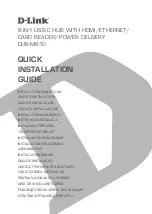
Page 14 of 21
Installation & Adjustment Procedures
5.3. Lay out all the operating mechanism parts and check them against the Operating
Mechanism drawing bill-of-material.
5.4. To aid switch inspection from the ground, there will be at least one threader bolt
(piercing bolt) on every Operating Mechanism. They may be installed, in most cases,
on the bottom sides of the clevises so they can be viewed from the ground when
pinned.
Do not pierce pipe at this time
.
5.5. To ensure that the bearing stops do not interfere with switch adjustments, loosen each
open/close bearing stop and slide them out of the way.
5.6. Refer to the Operating Mechanism drawing and install all mounting brackets, bearings,
bushings, pipe clevises, switch operating device, adjustable arm, reach rod, and other
necessary components. Refer to
. Do not connect the interphase pipe at
this time.
Figure 15: Typical Operating Arrangement
5.7. CAUTION:
The pipe collar (above the vertical bearing support) must support the entire
weight of the vertical operating pipe.
Do not allow the pipe to rest on the switch
operating device.
Refer to
&
5.8. When a switch uses an auxiliary switch arm, installation will be easier if this pole is
adjusted
before
installing the interphase pipe. This will eliminate trying to coordinate
and adjust all three poles at once. Refer to Op-Mech drawing for auxiliary arm
mounting degree.
5.9. While installing the pipes and clevises that have threader bolts (piercing bolts),
do not
pierce the pipe until instructed.
5.10. After mounting all the operating mechanism components, match-mark all clevis
connections, the adjustable arm, and the switch operating device’s coupling, so that
you can tell if slippage occurs during trial operations.








































